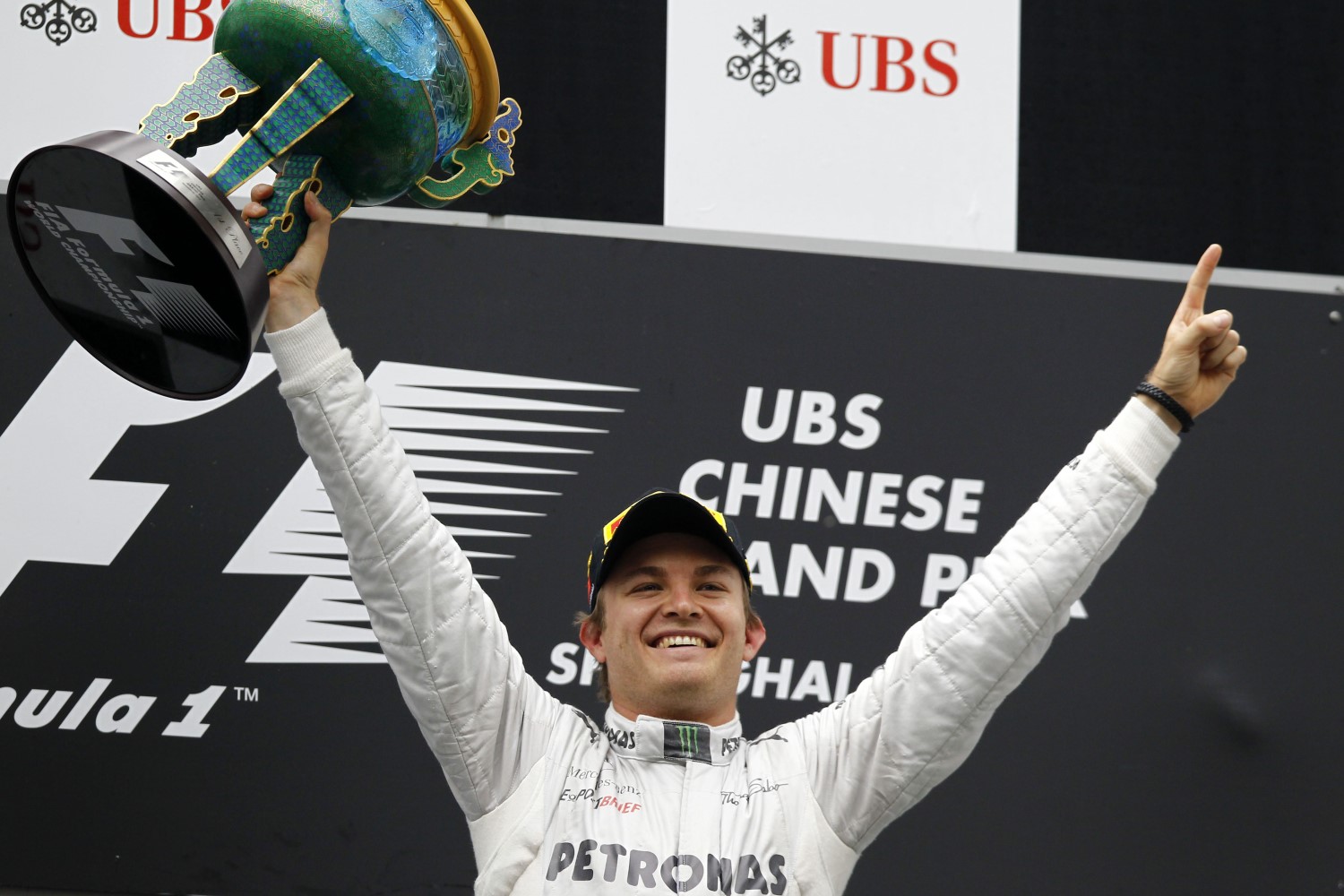Race Preview 2013 Chinese Grand Prix
 |
| Last year's winner Nico Rosberg |
After a two-week hiatus, Formula One fires up again as China and the Shanghai International Circuit play host to the third round of the 2013 FIA F1 World Championship.
The tenth year of the Chinese Grand Prix sees teams arriving at the expansive SIC paddock with as many questions as answers generated by the first two grands prix of 2013.
Uppermost in many minds is the perennial early-season issue of tire degradation. In recent years race strategies here have been on the cusp between two and three stops, leading to out-of-sequence racing and grands prix that remain tense right up until the closing laps.
As was the case in 2012, Pirelli will bring the white-banded medium and yellow-banded soft compounds to Shanghai. While the medium tire has been used already this year both in Malaysia and Australia, this weekend is the first time the new soft compound has been seen at a race. While this tire was used extensively during testing, the differences of temperature, track configuration and surface construction render that data largely irrelevant: teams will need to develop their understanding over the weekend.
 Even without that particular complication, SIC has the capacity to deliver captivating grands prix. Its long start-finish and back straights, in combination with the hairpin and tight ‘snail’ corner complexes, provide great overtaking opportunities, with or without the assistance of DRS.
Even without that particular complication, SIC has the capacity to deliver captivating grands prix. Its long start-finish and back straights, in combination with the hairpin and tight ‘snail’ corner complexes, provide great overtaking opportunities, with or without the assistance of DRS.
The opening two rounds of the 2013 Championship have provided intrigue rather than a definitive form guide for the season ahead. Kimi Räikkönen’s win for Lotus in Australia was an assured performance but the much different conditions of track and temperature in Malaysia saw Red Bull return to dominance. The Shanghai International Circuit will be different again, equally capable of providing a strong indication of form or shuffling the pack further.
- Chinese GP Fast Facts
The nine Chinese Grands Prix held to date at the Shanghai International Circuit have produced eight different winners. Only Lewis Hamilton (2008 and 2011) has triumphed more than once. - Only three times has the winning constructor in China gone on to lift the Constructors’ Championship trophy at the end of the season (Ferrari 2004, 2007, Renault 2005), and only three times has the winning driver gone on to win the Drivers’ Championship (Fernando Alonso 2005,Kimi Raikkonen 2007, Hamilton, 2008).
- Defending champions have faired even worse: McLaren’s Jenson Button is the only driver to win in China with the number one on his car; Ferrari (2004) are the only defending constructors’ champion to win the race.
- Ferrari (2004, 2006, 2007) and McLaren (2008, 2010, 2011) share the honors as constructors, they have each won three times in Shanghai. Red Bull (2009), Renault (2005) and Mercedes (2012) have each won the race on a single occasion.
- Nico Rosberg’s maiden pole and first victory were the standout performances of the 2012 race. Rosberg became the third Mercedes works driver to win in the F1 World Championship, following in the footsteps of Juan Manuel Fangio and Stirling Moss. It was Mercedes’ first (and to date only) victory since returning as a manufacturer in 2010, and therefore their solitary F1 win since 1955.
- Rosberg was the first new entry for three seasons on the list of grand prix winners. For the previous top-step debutant one has to look back to the German Grand Prix of 2009, won by Mark Webber. Both Webber and Rosberg took their first victory from their first pole position, a distinction shared in the current field by Sebastian Vettel (Italy 2008), Hamilton (Canada 2007), Felipe Massa (Turkey 2006) and Pastor Maldonado, the latter joining this select group in Spain, two races after Rosberg – albeit thanks to Hamilton’s demotion to the back of the grid.
- Despite SIC providing good overtaking opportunities, only once has a podium finisher started from outside the top ten (2011, Webber 18th to third).
- The braking zone for the hairpin at turn 14 sees drivers experience the highest g-forces of the year. With around three seconds on the brakes, the cars decelerate from maximum speed down to around 60kph for the slow corner.
- SIC is built on reclaimed marshland. It is supported by a buoyant polystyrene sandwich, which sits atop more than 40,000 concrete pilings, some of which go 80m deep into the soft earth. The circuit has been vulnerable to subsidence, requiring extensive resurfacing work over the years to even out bumps in the track.
CIRCUIT DATA
Length of lap:
5.451km
Lap record
1:32.238 (Michael Schumacher, Ferrari, 2004)
Start line/finish line offset
0.000km
Total number of race laps
56
Total race distance
305.066km
Pitlane speed limits
60km/h during practice and qualifying;
100km/h during race
Changes to the circuit since 2012
The final curb section at the exit to turn 13 (a beveled section, after a serrated negative part) has a 400mm chamfer added to the rear.
The top and back edge of all exit curbs have been rounded and chamfered with the intention of preventing tire damage.
Grass around the outside of turns one, two, three, six and eight has been replaced with Grass-Crete (similar to that around the outside of turn 11) and then painted green (with non-slip paint).
DRS Zone
The Shanghai International Circuit will feature DRS zones on the back straight and the start-finish straight. They will have individual detection points.
